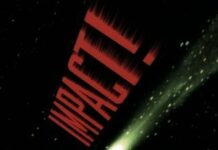
Ebook Info
- Published: 1996
- Number of pages: 272 pages
- Format: PDF
- File Size: 14.48 MB
- Authors: Gerrit L. Verschuur
Description
Long one of nature’s most fascinating phenomena, magnetism was once the subject of many superstitions. Magnets were thought useful to thieves, effective as a love potion or as a cure for gout or spasms. They could remove sorcery from women and put demons to flight and even reconcile married couples. It was said that a lodestone pickled in the salt of sucking fish had the power to attract gold. Today, these beliefs have been put aside, but magnetism is no less remarkable for our modern understanding of it. In Hidden Attraction, Gerrit L. Verschuur, a noted astronomer and National Book Award nominee for The Invisible Universe, traces the history of our fascination with magnetism, from the first discovery of magnets in Greece, to state-of-the-art theories that see magnetism as a basic force in the universe. The book begins with the early debunking of superstitions by Peter Peregrinus (Pierre de Maricourt), whom Roger Bacon hailed as one of the world’s first experimental scientists (Perigrinus held that “experience rather than argument is the basis of certainty in science”). Verschuur discusses William Gilbert, who confronted the multitude of superstitions about lodestones in De Magnete, widely regarded as the first true work of modern science, in which Gilbert reported his greatest insight: that the earth itself was magnetic. We also meet Hans Christian Oersted, who demonstrated that an electric current could influence a magnet (Oersted did this for the first time during a public lecture) and Andre-Marie Ampere, who showed that a current actually produced magnetism. Verschuur also examines the pioneering experiments and theoretical breakthroughs of Faraday and Maxwell and Zeeman (who demonstrated the relationship between light and magnetism), and he includes many lively stories of discovery, such as the use of frogs by Galvani and Volta, and Hertz’s accidental discovery of radio waves. Along the way, we learn many interesting scientific facts, perhaps the most remarkable of which is that lodestones are made by bacteria (a sediment organism known as GS-15 eats iron, converting ferric oxide to magnetite and, over billions of years, forming the magnetite layers in iron formations). Boasting many informative illustrations, this is an adventure of the mind, using the specific phenomenon of magnetism to show how we have moved from an era of superstitions to one in which the Theory of Everything looms on the horizon.
User’s Reviews
Reviews from Amazon users which were colected at the time this book was published on the website:
⭐For those interested in the history of magnetism, this is a good book to read. However, be forewarned that it disparages the ideas of animal magnetism and magnet therapy, so those hoping to learn more about those subjects will have to look elsewhere. Also, if you want to learn about permananet magnet motors, this is not the book for you. However, I found this a very useful book to use when explaining these latter topics, as it provides a readily available reference to use in explaining what science overlooked.
⭐Hidden Attraction is a fascinating account of the study of the quite baffling phenomenon of magnetism across approximately five centuries. Verschuur constructs a smooth transition from one discoverer/pioneer to the next, allowing the reader to follow in the footsteps of the various figures discussed.This is no boring catalog of scientists listing piecemeal contributions to the field; I personally found the book to be a page-turner. Hidden Attraction does not leave you feeling as if you could recite the names of historical figures–rather it gives you the sensation of having looked over their shoulders as they made their discoveries. Some of the scientists discussed, just to name a few, are Volta, Faraday, Hertz and Ampere.Verschuur gives enough depth of the subject matter to keep the interest of the scientifically-minded, unlike other books on the history of science which spread the accounts of real achievements sparingly over a wasteland of historical details and background. At the same time, Verschuur includes enough background and biographical info to give the reader a sense of who each figure was both as a scientist and as a person.Those without a strong foundation in physics may get lost in the last chapter or two–I am one of those. This, however, did not detract from the overall readability of the book.Hidden Attraction is well worth reading for anyone who is interested in the history of science and who is excited by great scientific achievements.
⭐I PURCHASED THE BOOK HOPING THAT IT WOULD HELP ME TO FIND OUT THE REAL STORY OF ELECTROMAGNETISM AND AN ANSWER TO THE QUESTION: “HOW DOES THE UNIVERSE WORK?”.AND IT HAS REALLY DONE!
⭐This is a most interesting read about lodestones and magnetism as told through an all inclusive historical record encompassing the evolvement of our understanding of what magnetism is. Gerrit L. Herschuur takes the reader on a dramatic discovery of everything there is or ever was to know about magnetism, from it’s being a mystical lodestone with superstition as a basis of understanding, to the degree of sophisticated knowledge we have today. He has a natural talent for keeping the reader as intrigued as if he/she were holding a best selling mystery novel! The best part is, this is a non-fictional true life natural mystery and you won’t be able to put this book down until you’ve finished it. Herschuur reveals every mystery contained within and about magnetism, all the stuff you ever wanted to know about it, but didn’t know who to ask!
⭐This book covers in a bit more detail the history and people involved with the discovery of magnetism and subsequent magnetic phenomena. Unfortunately it is also somewhat repetitive with topics being brought up again and again for pages at a time. It also veers off topic into cosmology, metaphysics and science policy. An editor with a strong hand would have improved this book considerably. I suggest skipping this book unless you can pick it up used for half price.
⭐Nothing new, no insights, just a book some average college professor has to write to say he “published”. I hope this guy isn’t tenured at UT – because the students are going to get a big dose of Darwinism/Atheism and no physics info – just bios and his opinion.
⭐I purchased this book two years ago. In contrast to the other reviews on this book, I found it to be well written and especially so on the topic of the history of developments in magnetism. Yes the book has shortcomings. There is no explanation about the way magnetism arises from the perspective of quantum physics. But recall, this is only an introduction to ‘this hidden’ force. So in a nutshell, I would recommend this book for anyone interested in obtaining a comprehensive background to magnetism and the contributions made by Faraday and colleagues. Well done Verschuur!
Keywords
Free Download Hidden Attraction: The History and Mystery of Magnetism (Oxford Paperbacks) 1st Edition in PDF format
Hidden Attraction: The History and Mystery of Magnetism (Oxford Paperbacks) 1st Edition PDF Free Download
Download Hidden Attraction: The History and Mystery of Magnetism (Oxford Paperbacks) 1st Edition 1996 PDF Free
Hidden Attraction: The History and Mystery of Magnetism (Oxford Paperbacks) 1st Edition 1996 PDF Free Download
Download Hidden Attraction: The History and Mystery of Magnetism (Oxford Paperbacks) 1st Edition PDF
Free Download Ebook Hidden Attraction: The History and Mystery of Magnetism (Oxford Paperbacks) 1st Edition

